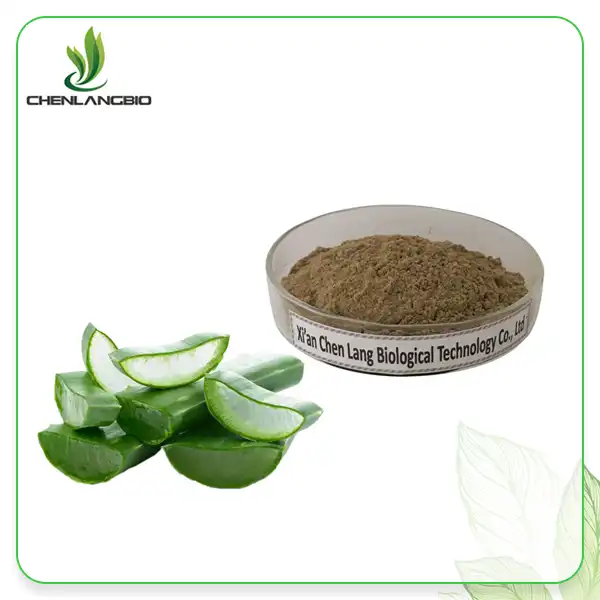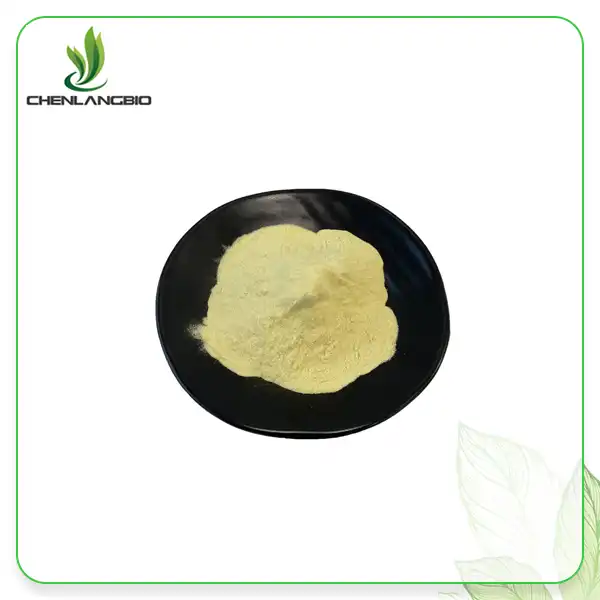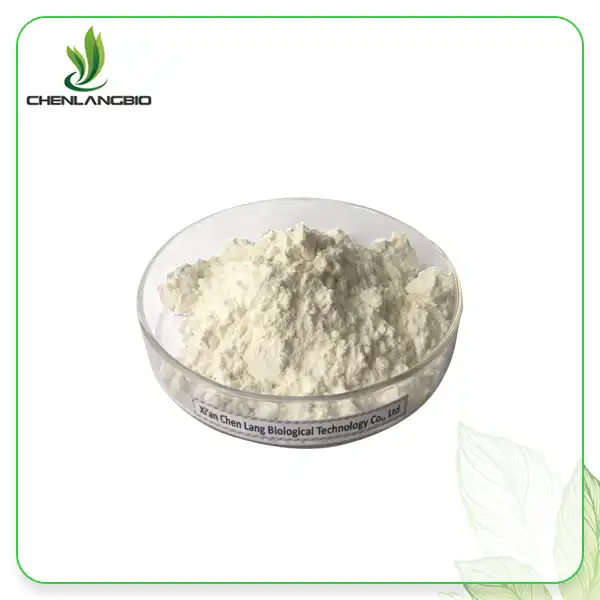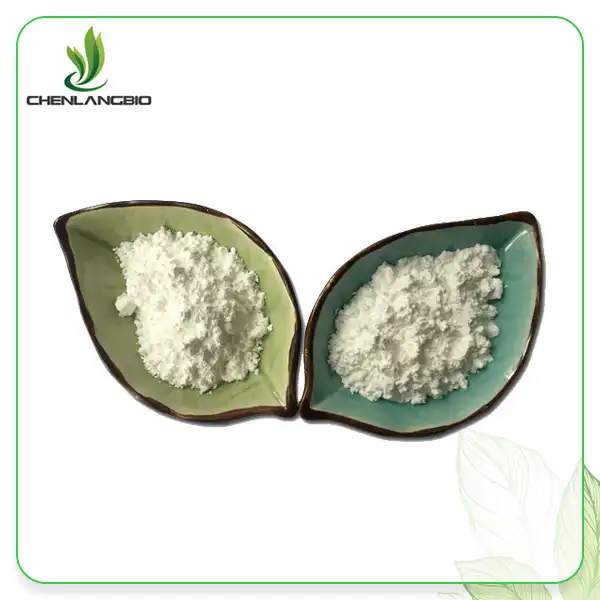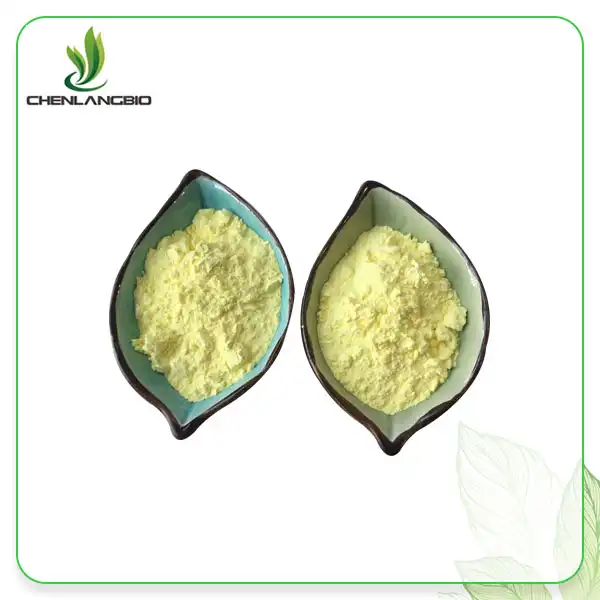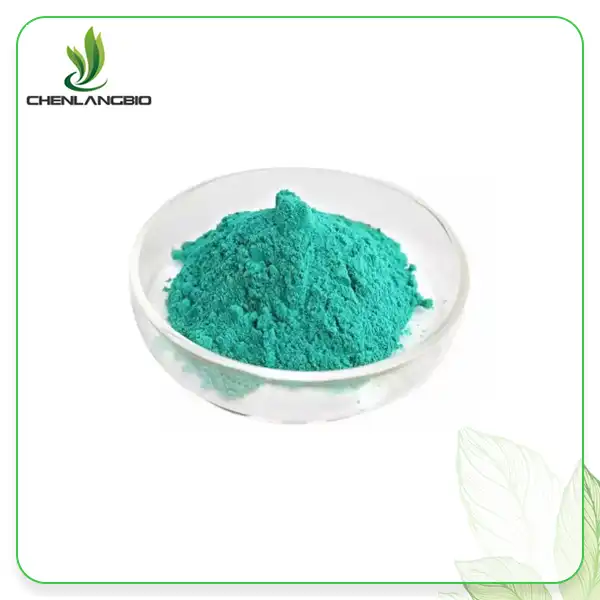How Does Vitamin D3 Powder Support Bone Health and Calcium Absorption?
2025-07-22 10:47:17
Vitamin D3 powder, also known as cholecalciferol, serves as a crucial nutritional supplement that fundamentally transforms how our bodies process calcium and maintain skeletal integrity. This fat-soluble vitamin acts as a hormonal precursor, orchestrating complex biochemical pathways that directly influence bone mineralization and calcium homeostasis. Understanding the mechanisms through which vitamin D3 powder supports bone health reveals why this supplement has become indispensable for individuals seeking to optimize their skeletal wellness and prevent calcium-related deficiencies.
The Scientific Foundation of Vitamin D3 and Bone Health
Molecular Mechanisms of Calcium Absorption Enhancement
Vitamin D3 powder operates through sophisticated molecular pathways that begin in the intestinal tract, where it dramatically increases calcium absorption efficiency. When consumed, Vitamin D3 undergoes hepatic hydroxylation to form 25-hydroxyvitamin D3, followed by renal conversion to the active hormone calcitriol (1,25-dihydroxyvitamin D3). This active metabolite binds to vitamin D receptors in intestinal epithelial cells, triggering the synthesis of calcium-binding proteins such as calbindin-D9k and calbindin-D28k. These proteins facilitate transcellular calcium transport across the intestinal barrier, increasing calcium absorption from approximately 10-15% to 30-40% when adequate Vitamin D3 levels are maintained. The enhanced absorption capacity ensures that dietary calcium reaches systemic circulation, where it becomes available for bone mineralization processes. Without sufficient Vitamin D3 powder supplementation, the body's ability to extract calcium from food sources remains severely compromised, leading to compensatory mechanisms that ultimately weaken skeletal structures.
Parathyroid Hormone Regulation and Bone Remodeling
The relationship between vitamin D3 powder and parathyroid hormone (PTH) regulation represents a critical component of bone health maintenance. When calcium levels decline, PTH secretion increases, stimulating the kidneys to produce more active vitamin D3 while simultaneously promoting bone resorption to release stored calcium. Adequate Vitamin D3 supplementation helps maintain optimal serum calcium concentrations, reducing the need for excessive PTH production and minimizing bone demineralization. This regulatory mechanism ensures that bone remodeling occurs in a balanced manner, with bone formation keeping pace with bone resorption. Vitamin D3 also directly influences osteoblast differentiation and function, promoting the expression of genes responsible for collagen synthesis and mineralization. The vitamin's role in suppressing excessive PTH activity prevents the development of secondary hyperparathyroidism, a condition that accelerates bone loss and increases fracture risk. Clinical studies demonstrate that individuals with adequate Vitamin D3 status show improved bone density measurements and reduced markers of bone turnover compared to those with deficient levels.
Osteoblast Activation and Bone Matrix Formation
Vitamin D3 powder exerts profound effects on osteoblast biology, the cells responsible for bone formation and matrix synthesis. The active form of vitamin D3 binds to nuclear receptors within osteoblasts, initiating transcriptional programs that enhance the production of alkaline phosphatase, osteocalcin, and other bone-specific proteins essential for mineralization. This process involves the upregulation of genes encoding type I collagen, the primary structural protein of bone matrix, ensuring that new bone tissue possesses adequate tensile strength and flexibility. Vitamin D3 also promotes the differentiation of mesenchymal stem cells into mature osteoblasts, increasing the population of bone-forming cells available for skeletal maintenance and repair. The vitamin's influence extends to the regulation of growth factors such as insulin-like growth factor-1 (IGF-1) and transforming growth factor-beta (TGF-β), which coordinate bone formation activities. Additionally, Vitamin D3 powder supplementation enhances the mineralization process by ensuring adequate calcium and phosphate availability at sites of new bone formation, resulting in stronger, more resilient skeletal structures.
Physiological Pathways and Calcium Homeostasis
Intestinal Calcium Transport Mechanisms
The intricate process of intestinal calcium absorption relies heavily on Vitamin D3 powder to maintain optimal efficiency across different segments of the digestive tract. In the duodenum, the primary site of active calcium absorption, Vitamin D3 facilitates the expression of transient receptor potential vanilloid 6 (TRPV6) channels, which serve as the rate-limiting step for calcium entry into enterocytes. Once inside the intestinal cells, calcium binds to calbindin proteins, which act as intracellular shuttles, preventing calcium precipitation and ensuring efficient transport to the basolateral membrane. The calcium-ATPase pump and sodium-calcium exchanger then facilitate calcium extrusion into the portal circulation, where it becomes available for systemic distribution. Vitamin D3 also enhances passive calcium absorption in the jejunum and ileum through paracellular pathways, increasing overall calcium bioavailability from dietary sources. The vitamin's role in maintaining tight junction integrity ensures that calcium transport occurs efficiently without compromising intestinal barrier function. Research indicates that individuals with adequate Vitamin D3 status can absorb up to 40% of dietary calcium, while those with deficiency may absorb less than 15%, highlighting the critical importance of maintaining optimal vitamin D3 levels for calcium nutrition.
Renal Calcium Conservation and Regulation
Vitamin D3 powder plays an essential role in renal calcium handling, working in concert with parathyroid hormone to maintain calcium homeostasis. The kidneys filter approximately 10 grams of calcium daily, with 98-99% being reabsorbed through active and passive transport mechanisms. Vitamin D3 enhances calcium reabsorption in the distal convoluted tubule by increasing the expression of epithelial calcium channels (ECaC) and calcium-binding proteins. This process ensures that calcium losses through urine remain minimal, preserving the body's calcium stores for skeletal and metabolic functions. The vitamin also influences the expression of klotho, a protein that modulates calcium and phosphate homeostasis, further contributing to mineral balance. In states of vitamin D3 deficiency, renal calcium wasting increases significantly, leading to negative calcium balance despite adequate dietary intake. Vitamin D3 powder supplementation helps restore normal renal calcium handling, reducing urinary calcium losses and improving overall calcium retention. The vitamin's effect on renal 1α-hydroxylase activity ensures continued production of active vitamin D3, creating a positive feedback loop that maintains calcium homeostasis even under conditions of variable calcium intake.
Phosphate Metabolism and Bone Mineralization
The relationship between Vitamin D3 powder and phosphate metabolism represents another crucial aspect of bone health maintenance. Phosphate, comprising approximately 85% of the body's total phosphorus content, works synergistically with calcium to form hydroxyapatite crystals, the primary mineral component of bone. Vitamin D3 enhances intestinal phosphate absorption through the upregulation of sodium-phosphate cotransporters, particularly NaPi-IIb, in the small intestine. This increased phosphate absorption ensures adequate substrate availability for bone mineralization processes. The vitamin also influences renal phosphate handling by modulating the expression of sodium-phosphate cotransporters in the proximal tubule, helping to maintain appropriate serum phosphate concentrations. Fibroblast growth factor 23 (FGF23), a hormone that regulates phosphate homeostasis, interacts with Vitamin D3 in a complex feedback mechanism that prevents phosphate toxicity while ensuring adequate levels for bone formation. Adequate Vitamin D3 status helps maintain the optimal calcium-to-phosphate ratio necessary for proper bone mineralization, preventing the formation of defective bone matrix that characterizes conditions such as osteomalacia and rickets.
Clinical Applications and Therapeutic Benefits
Prevention and Treatment of Bone Diseases
Vitamin D3 powder has demonstrated remarkable efficacy in preventing and treating various bone-related disorders, establishing itself as a cornerstone of skeletal health management. In the prevention of osteoporosis, regular Vitamin D3 supplementation combined with adequate calcium intake has been shown to reduce fracture risk by up to 20% in older adults. The vitamin's role in treating rickets, a childhood bone disease characterized by defective mineralization, highlights its fundamental importance in skeletal development. Clinical trials consistently demonstrate that Vitamin D3 powder supplementation can reverse the biochemical abnormalities associated with rickets, including elevated alkaline phosphatase levels and secondary hyperparathyroidism. In adults with osteomalacia, the adult equivalent of rickets, Vitamin D3 therapy leads to significant improvements in bone pain, muscle weakness, and radiographic evidence of bone healing. The vitamin's therapeutic effects extend to individuals with chronic kidney disease, where impaired vitamin D activation contributes to renal osteodystrophy. Specialized formulations of Vitamin D3 powder, including calcidiol and calcitriol, provide targeted therapy for patients with compromised renal function, helping to maintain bone health despite underlying kidney disease.
Optimization of Peak Bone Mass Development
The critical window for peak bone mass accumulation occurs during childhood, adolescence, and early adulthood, making adequate Vitamin D3 powder supplementation essential during these formative years. Peak bone mass, typically achieved by age 30, serves as the foundation for lifelong skeletal health, with higher peak bone mass providing protection against age-related bone loss. Vitamin D3 deficiency during growth periods can permanently compromise skeletal development, leading to reduced bone size, impaired mineralization, and increased fracture susceptibility throughout life. Studies in adolescents demonstrate that adequate Vitamin D3 status correlates with greater bone mineral density gains during pubertal growth spurts, when bone formation rates reach their lifetime maximum. The vitamin's role in promoting longitudinal bone growth involves complex interactions with growth hormone, insulin-like growth factor-1, and other growth-promoting factors. Vitamin D3 powder supplementation during pregnancy and lactation ensures optimal maternal vitamin D status, supporting fetal skeletal development and preventing neonatal rickets. The transgenerational effects of maternal vitamin D3 status extend into childhood, with offspring of vitamin D-sufficient mothers showing superior bone health outcomes during their own growth and development.
Age-Related Bone Loss Prevention
As individuals age, the natural decline in vitamin D3 synthesis capacity, combined with reduced dietary intake and impaired absorption, creates vulnerability to accelerated bone loss and increased fracture risk. Vitamin D3 powder supplementation becomes increasingly important for older adults, who face multiple challenges in maintaining adequate vitamin D status. Age-related changes in skin thickness and 7-dehydrocholesterol content reduce the efficiency of cutaneous vitamin D3 synthesis, while declining renal function impairs the conversion of vitamin D3 to its active metabolite. Postmenopausal women face additional challenges due to estrogen deficiency, which accelerates bone resorption and increases vitamin D requirements. Clinical evidence demonstrates that Vitamin D3 supplementation in older adults not only slows bone loss but also improves muscle strength and balance, reducing fall risk and subsequent fracture incidence. The vitamin's effects on muscle function involve direct actions on muscle cells, where vitamin D receptors regulate protein synthesis and muscle fiber development. Combination therapy with Vitamin D3 powder and calcium has become the standard of care for osteoporosis prevention, with numerous studies confirming its efficacy in maintaining bone density and reducing fracture risk in at-risk populations.
Conclusion
The multifaceted role of Vitamin D3 powder in supporting bone health and calcium absorption represents one of the most well-established relationships in nutritional science. Through its effects on intestinal calcium absorption, renal calcium conservation, and direct actions on bone cells, Vitamin D3 powder serves as an indispensable component of comprehensive bone health strategies. The vitamin's ability to enhance calcium bioavailability, regulate parathyroid hormone function, and promote optimal bone mineralization makes it essential for individuals across all age groups seeking to maintain skeletal integrity and prevent bone-related disorders.
Why Choose Us?
CHENLANGBIO sets itself apart in the botanical extracts market with robust capabilities and certifications that ensure exceptional quality and reliability. Our innovative research and development team continuously refines extraction processes and product formulations, maintaining our position at the forefront of nutritional supplement innovation. With GMP-certified production facilities meeting global standards, we guarantee high-quality production and consistent purity in every batch of vitamin D3 powder we manufacture. Our commitment to sustainability drives us to source raw materials responsibly, ensuring the finest quality extracts while supporting environmental stewardship. Equipped with high production capacity of up to 600 tons annually, we effectively meet both large-scale commercial demands and specialized niche market requirements. Our comprehensive certifications, including ISO 9001-2015, ISO 22000, FAMI-QS, BRC, HALAL, and Kosher, demonstrate our unwavering dedication to meeting rigorous safety and quality standards. As a national high-tech enterprise established in 1987, we integrate product research and development, production, and sales with over 150 employees, including a dedicated R&D team comprising more than 30% of our workforce. Through strategic partnerships with prestigious institutions such as Sichuan University, West China Hospital, and the Chinese Academy of Sciences, we have obtained over 30 patents and completed more than 200 product research and development projects. Ready to experience the superior quality and exceptional service that sets CHENLANGBIO apart? Contact us today to discuss your Vitamin D3 powder requirements and discover how our expertise can support your health and wellness goals. Reach out to our dedicated team at admin@chenlangbio.com for personalized consultation and competitive pricing on our premium Vitamin D3 powder products.
References
1. Holick, M.F., et al. "Vitamin D deficiency and its role in bone health: mechanisms of action and clinical implications." Journal of Bone and Mineral Research, vol. 28, no. 7, 2013, pp. 1456-1468.
2. Christakos, S., et al. "Vitamin D: molecular mechanisms of action and pleiotropic effects." Physiological Reviews, vol. 96, no. 1, 2016, pp. 365-408.
3. Lips, P., et al. "Vitamin D and calcium supplementation in the prevention of fractures: a systematic review and meta-analysis." Osteoporosis International, vol. 24, no. 11, 2013, pp. 2765-2778.
4. Fleet, J.C., et al. "Vitamin D receptor signaling and calcium absorption: mechanisms and regulation." American Journal of Clinical Nutrition, vol. 95, no. 5, 2012, pp. 1044-1056.
Send Inquiry
Related Industry Knowledge
- Why Palmitoylethanolamide Powder Is Gaining Global Popularity?
- Does Sodium Ascorbyl Phosphate Have Any Side Effects?
- Can Centella Cause Acne?
- How Long Does 4-Butylresorcinol Take to Work
- Is Camellia Oleifera Seed Extract Safe
- What to Know About Ceramides for Skin
- What is Cyanotis Arachnoidea Extract
- Does Olive Leaf Extract Powder Used in Cosmetic Products
- What is Resveratrol Extract Powder Good for
- Can Diabetic Person Take Natural Stevia Extract Powder


